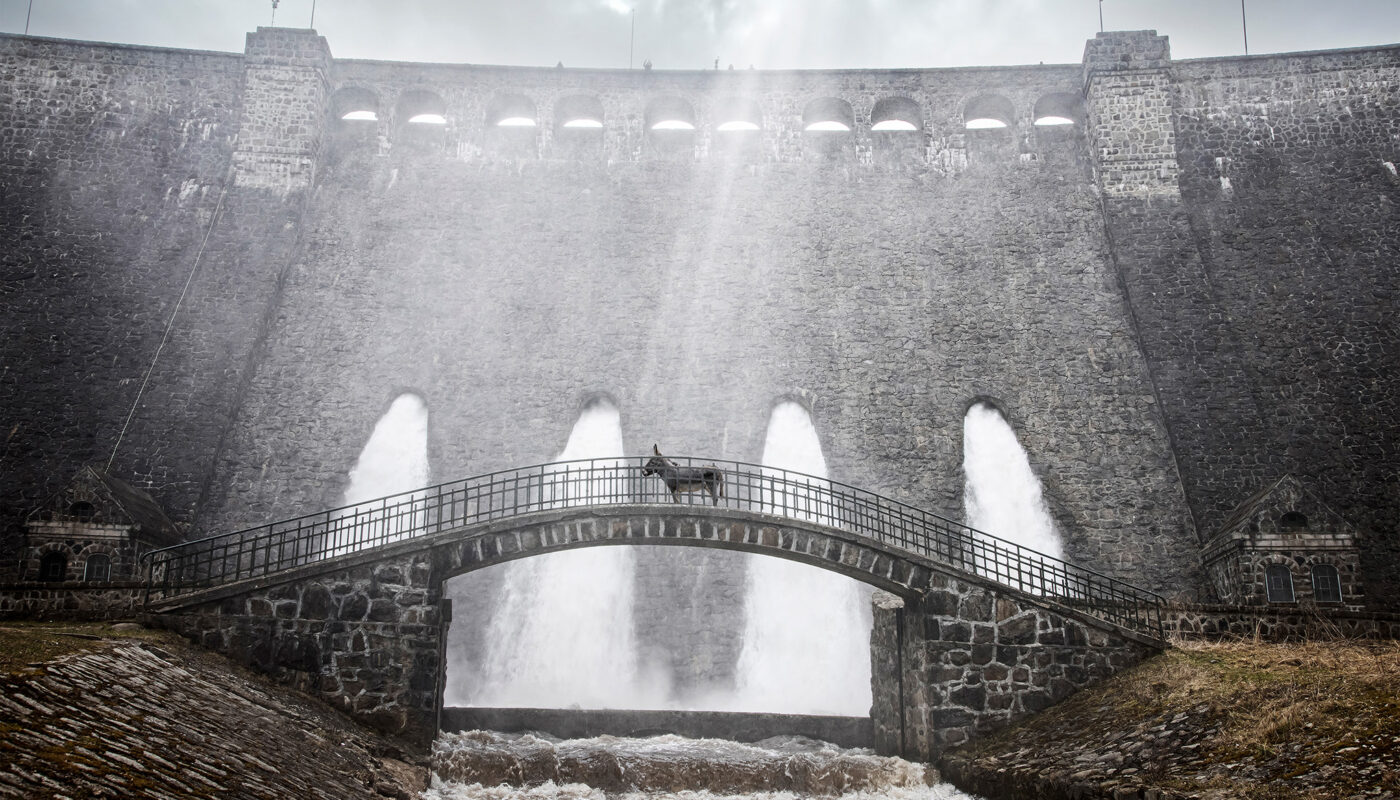In one of analytic philosopher Ludwig Wittgenstein’s most widely shared quotes, he mused that “if a lion could talk, we would not understand him.” The barrier of language and gulf of understanding between man and animal is the subject of the quite wondrous Eo, a true surprise from the great Polish filmmaker Jerzy Skolimowski, now enjoying his mid-80s. It is adapted—freely inspired may be a better term—from Robert Bresson’s iconic 1966 film Au Hasard Balthazar; from Eo’s opening minutes any memory or sense of that masterpiece’s forbidding stature is banished—we’re dealing with quite a different animal here. No, it isn’t as good. But it’s different, and a companion piece that flatters both that film and itself.
For Bresson—a cruel moralist, but definitely not a sadist—the donkey Balthazar was meant to unveil the human capacity for sin; with intensely Catholic symbolism Balthazar acted as a calvary to redeem us. Skolimowski is more concerned by the donkey as an animal, and one able to gain a more multifarious perception of the world, where mere homo sapiens feel stuck in their place and routine by comparison.
Skolimowski, a transnational film presence with work in English (Deep End being his most acclaimed to date), French, and Polish, has recently specialized in technically challenging feats of direction—the dialogue-free Vincent Gallo vehicle Essential Killing and lattice-like storytelling of 11 Minutes. In Eo he is basically unleashed, an auteur completely off the chain, devising a spectacular new language for showing a non-human way of seeing on screen, building on the work of Godfrey Reggio in Koyaanisqatsi and the immersive anthropology of the Harvard SEL (which birthed 2012’s great Leviathan).
Still, one limitation of Eo is that it isn’t very rigorous in showing the exact nature of his trajectory in life; how Eo (his A.A. Milne-alike name) actually gets from place to place (and there are a lot of locales in the film) is quite tenuous, which renders the response to his demise not quite as emotionally crushing compared to Bresson’s rigor. We don’t see the birth like in the original, but his origin story seems to be a life of care and validation in the climes of a traditional Polish circus, with a performer named Kasandra (Sandra Drzymalska) who uses him, not cruelly, in her act.
As the circus faces pressure from animal-rights protestors, Eo is let go and embarks on his adventures. Stopping points include a wealthy horse trainer, an amateur-league football match ambushed by far-right protests, and the home of a wealthy countess (played by a famous actress whose identity I won’t spoil). Skolimowski and co. shoot Eo from eerie low angles, giving him the impression of a giant, or something from Dune, and then straight-on in close-up with ultra-wide-angle lenses that distort and stretch the background action, making the viewer feel like they’re on potent hallucinogens. There’s also a soaring mid-air tracking shot with the mph of a race car, ending in a witty payoff that again brings out Skolimowski’s clear animal sensitivity.
Viewers will have varying reactions to the implications of this very fun-natured, actually quite unpretentious film. For me, in addition to being a plea to think about the lives, right to life, and dignity of animals, it’s also an attempt to show they experience the world in just as potentially an ecstatic way as us, diminished their agency and self-sufficiency may be. Skolimowski uses cinema to create a non-headset-required virtual-reality experience of another creature’s life—an empathy machine, if you will.
Eo premiered at the Cannes Film Festival.

